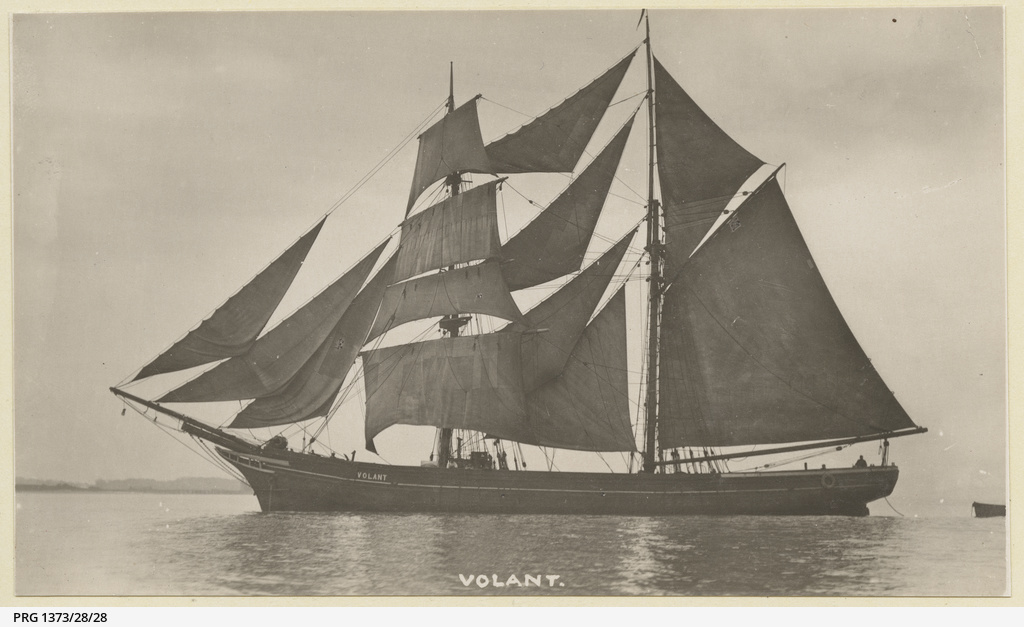Ship
Country of Origin
Canada
Built
Prince Edward Island
Rig
Brigantine
Tonnage (Gross)
145.00
Port Departed
Melbourne
Port Destination
Muiron Islands
Wrecked
Around 55 kilometres south of the Cape at Carbaddaman Passage
History
Occator was a 27.2 metre, 145-tonne brigantine launched in Prince Edward Island, Canada, in 1853. In January 1856, it left Melbourne to examine reportedly rich guano deposits on the Muiron Islands off North West Cape, which were part of the thriving global fertiliser trade of the era.
Chartered by J. F. Jones of Melbourne, who also was a passenger on board, by the afternoon of 4 February, Occator was at an estimated 80 kilometres west of the Cape. The vessel’s master, Captain Place, then set a course towards the east, expecting to sight land in the morning.
Shipwreck
At about 3.30 a.m., somewhere in the region of Carbaddaman Passage, breakers were sighted. As the helm was put hard over, Captain Place came on deck, seeing the vessel ‘in stays’ (i.e. not coming around). After giving orders to haul the yards round, the vessel began to head back out to sea, but as it did, the keel touched, and a heavy sea broke over the deck, throwing Occator onto the reef and damaging the hull. With water rising in the hold and the rudder unshipped, the crew began to abandon ship. The ship was lost, but the crew's ordeal was only just beginning.

The Occator would have appeared similar to the brigantine Volant, also built at Prince Edward Island, Canada. A.D Edwardes Collection, State Library of South Australia, PRG 1373/28/28.
Survivors
The first boat launched was destroyed by the seas. This forced the crew to send off the longboat in which the mate, Jones, and four crew went ashore. Three others in the crew remained onboard and Captain Place went below for provisions. On the boat's return—reasonably well-provisioned and with some navigation equipment—they all departed the stricken ship. After regrouping, the ten men sailed an estimated 90 kilometres north to Muiron Island, where they expected to find another vessel. After four days, and with no relief in sight, they elected to return to the wreck for more water. Unable to launch the boat due to the topography and conditions, they dragged it nearly three kilometres across the island. After finding a suitable place on the eastern side, they then set of south towards the wreck.
After proceeding down the coast, they found that a group of ‘about 40’ Aboriginal people were following the boat down to the wreck. While all went well initially, they reacted angrily when a cask of water that had been washed ashore was put into the boat. They then followed it out, armed with stones and spears. When the water got too deep, about ten of them began swimming after the boat, apparently with the intention of seizing it. A spear was thrown without causing any injury while ‘others cast stones with slings’. Jones then shot one man, causing the Aboriginal people to retire to the hills where they lit a fire.
The crew then departed for Shark Bay, taking eight days to get to Dirk Hartog Island where they lived for around a month on crabs, wallabies, and drinking turtle blood as a substitute for water. After unsuccessfully trying to depart for Fremantle, they crossed over to what they thought was the mainland with the intention of walking to safety. On returning to Dirk Hartog Island, 42 days after they had been wrecked, they saw the schooner Favourite at anchor off Bird Island where they had been collecting guano and were saved.
Search for Occator
In June 2004, a Mr Albert Gorman reported an acquaintance he called ‘the Yank’ finding, what appears to have been, an iron knee 10 feet long, by six inches wide by three inches deep, with a ‘bronze fastening at the ‘drop off’ north of Yardie Creek. He described the location as, ‘south past the homestead near where the reef comes within 200m of shore’.
As Occator was copper and iron fastened, sheathed in yellow metal and with 10 pairs of iron hanging knees, it is possible that Mr Gorman had seen part of Occator, though it is also possible the knee could be from another vessel.
In 2024, the Western Australia Museum participated in the making of the second season of Shipwreck Hunters Australia, a Disney+ documentary series. The Shipwreck Hunters Australia team searched areas along Ningaloo Reef, but unfortunately did not locate the wreck.
Protection
Although the wreck of Occator has yet to be discovered, the vessel is more than 75 years old and is therefore automatically protected under the Commonwealth Underwater Cultural Heritage Act 2018.
